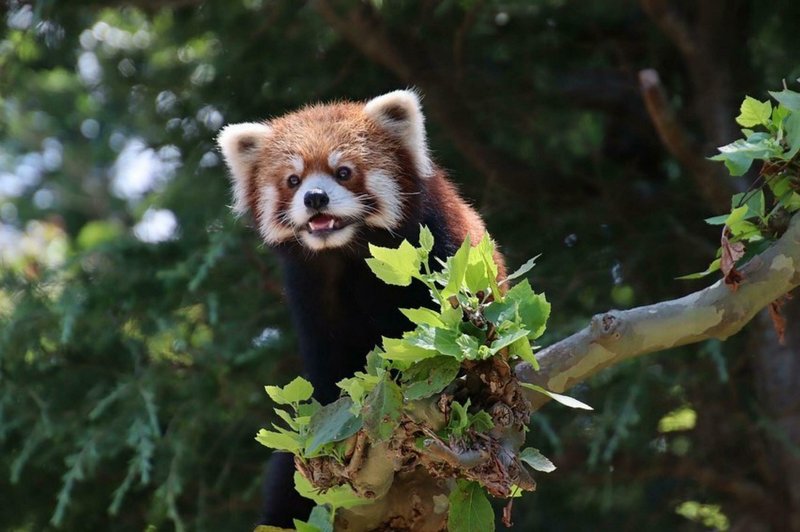
Understanding the endangered status of the panda is a bit like putting together a puzzle. You have to look at various pieces—habitat loss, climate change, conservation efforts, and even cultural significance. Just like when you sip your favorite coffee and savor each flavor, grasping the complexity of panda conservation brings a deeper appreciation of what these animals face in the wild.
In this article, we’ll dive deep into the issues surrounding panda conservation. We’ll explore the reasons they’ve become endangered, the progress made so far, and what we can do to help. So, grab your coffee, and let’s unravel this together!
What Does Endangered Mean?
You might be wondering, “What exactly does it mean for an animal to be endangered?” Simply put, when a species is classified as endangered, it means they’re at a high risk of extinction. Think of it like a game of Jenga: as more blocks are removed (or in this case, pandas lost), the tower becomes less stable.
The International Union for Conservation of Nature (IUCN) uses a system to categorize species based on their risk levels. This includes categories like vulnerable, endangered, and critically endangered. Pandas fall into the endangered category, meaning they face significant threats that could lead them to extinction without intervention.
A few factors contribute to this status. Habitat destruction, climate change, and low birth rates all play a role in the panda’s precarious situation. We’ll dive into these aspects in more detail as we go along, but knowing that pandas are endangered is the crucial first step in understanding their plight.
Why Are Pandas Endangered?
Now, let’s take a closer look at the main reasons why pandas have become endangered. It’s a mix of environmental challenges and human impact.
First up is habitat loss. As humans expand their cities and farms, they encroach on panda habitats. Forests are cleared for agriculture and development, leaving pandas with fewer places to live. Imagine being evicted from your home—it’s a harsh reality for these bears.
Another significant factor is the low birth rate of pandas. They’re solitary creatures, and when breeding season comes around, only one female is ready to mate each year. Even when they do mate, survival isn’t guaranteed. Most cubs are born in pairs, but usually only one survives. It’s the survival of the fittest, and for pandas, that’s a tough game.
Lastly, climate change is altering their habitats. Warmer temperatures can change the growth patterns of bamboo, their primary food source. If bamboo can’t thrive, the pandas can’t thrive either. It’s a worrying cycle that needs urgent attention.
Conservation Efforts in Place
So, what’s being done to help pandas? Fortunately, there are numerous conservation efforts underway aimed at reversing their endangered status.
One notable initiative is the establishment of wildlife reserves. Countries like China have set up protected areas where pandas can roam freely without the threat of human activity. These reserves are like safe havens, allowing pandas to live more naturally and increase their chances of breeding successfully.
Additionally, conservation programs work closely with local communities. They educate people about the importance of protecting pandas and their habitats. By involving the locals, these programs foster a sense of pride and responsibility towards preserving this iconic species. It’s like building a team where everyone pitches in to win!
Moreover, breeding programs in captivity have proven successful. Facilities like the Wolong National Nature Reserve focus on increasing panda populations by providing a safe environment for breeding and raising cubs. These cubs are often released into the wild as they grow, helping bolster the wild population.
The Role of Technology in Panda Conservation
You might be surprised to learn that technology plays a big part in panda conservation. Modern tools and equipment help researchers track panda populations and behaviors, making it easier to understand their needs.
One effective technology is GPS tracking. By fitting pandas with collar devices, scientists can monitor their movements in real-time. This helps identify where they roam and find out if they come into contact with human developments, allowing for timely interventions.
Camera traps are another fascinating tool. These devices take photos of wildlife without disturbing them. This way, researchers can gather valuable data about panda populations, their behaviors, and even their dietary habits. It’s like having a secret window into their world!
As technology continues to evolve, we can expect even more innovative solutions to support panda conservation.
The Cultural Significance of Pandas
Pandas aren’t just the face of wildlife conservation; they hold cultural significance that extends beyond their adorable looks. In China, they are considered a national treasure and symbolize peace and harmony.
The giant panda is also a global ambassador for conservation efforts. Countries often use them to raise awareness about the importance of protecting endangered species. Think of them as the poster child for wildlife preservation. When people hear about pandas, they often become more interested in conservation as a whole.
Zoos around the world also contribute by educating visitors about the plight of these bears. They host events and campaigns that help raise funds for conservation efforts and encourage visitors to take action. It’s a beautiful cycle of education and empowerment, all driven by the charm of these furry friends.
How You Can Help Panda Conservation
Feeling inspired to help? There are plenty of ways you can contribute to panda conservation efforts, even if it feels like a small step.
One of the easiest ways is to support organizations dedicated to panda conservation. Donating to groups like the World Wildlife Fund (WWF) can help fund projects aimed at protecting panda habitats and raising awareness. Even a small contribution can make a big difference.
You can also promote awareness through social media. Sharing posts about pandas or conservation initiatives helps spread the word to your friends and family. It’s like a ripple effect—one share can lead to many more!
Additionally, choosing sustainable products and supporting eco-friendly brands can help reduce habitat destruction. When we opt for products that are responsibly sourced, we’re taking steps towards protecting the planet, including panda habitats.
The Future of Pandas: A Hopeful Outlook
Despite the challenges faced, there’s reason for hope. Conservation efforts are showing positive results, and panda populations are slowly increasing. According to recent estimates, there are now over 1,800 giant pandas living in the wild. That’s a victory we can celebrate!
While it’s clear that a lot of work still needs to be done, increased awareness and action are making a difference. Remember, every little effort counts, and each person has the power to be a part of the solution.
As we continue to champion for pandas and their habitats, let’s keep pushing for sustainable practices and conservation efforts. Together, we can ensure that these beloved bears will be around for generations to come.
In this journey of understanding and protecting the panda, we all play a role. Whether through direct action or amplifying the conversation, each step helps pave the way for a brighter future for our furry friends. Let’s keep the momentum going!

